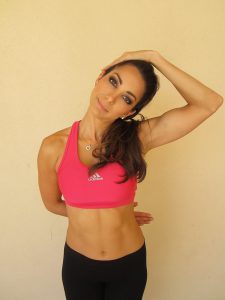When it comes to physical health, exercise is rightfully one of the first things people think of. But most people think “getting in shape” just means vigorous activities like running or weightlifting. After all, “gentler” forms of exercise like stretching won’t give you a smaller waistline or bigger biceps, and if you’re putting in the work, it’s only natural that you’ll want to see tangible results.
But just because you won’t see any visible results from stretching doesn’t mean it won’t benefit you, or that you shouldn’t do it! In fact, stretching is more important than you think, and should be part of everyone’s exercise routine. And because there’s no equipment required to stretch, it’s easy to do anywhere, anytime. Your body will tell you what feels good and what doesn’t, so take it slow and enjoy the benefits. Get some tips on why and how you should stretch today!
Why Should You Be Stretching?
If you think that only gym rats and athletes should be stretching, you’re wrong. Even if you wouldn’t classify yourself as an athlete, stretching is something that you should do everyday regardless of age, fitness level, or abilities. Here’s why:
- Stretching keeps your muscles strong, healthy, and flexible. After a stretch session you’ll see your range of motion increase, and you’ll feel less tight and restricted in your movements.
- Stretching helps improve your posture. Tight muscles that don’t get stretched can cause poor posture. A good stretch routine paired with some core exercises can help set you back on the straight and narrow.
- Stretching improves circulation by increasing blood flow through your tissue and muscles. This is particularly beneficial for those with diabetes and/or high blood pressure. Add on some cardio, such as walking or cycling, to really set your circulatory system in motion.
Types Of Stretching
Now you know what stretching can do for your body, but what kind of stretches should you be doing? See if the following types feel right for your body:
- Static Stretching. This type of stretching involves moving into an end range of motion and then holding that position. Some examples would be crossing your arm across your body and holding your elbow to stretch your shoulder, or grabbing your heel and pulling it to your bottom for a nice quad stretch. These types of stretches are great to try after a workout, to help cool you down and prevent soreness.
- Dynamic Stretching. When you engage in dynamic stretching, you’ll be performing active, controlled movements with larger ranges of motion. Arm circles, walking lunges, and squatting all fall into this category and are usually done before working out to prepare your muscles for exercise.
- Ballistic Stretching. A ballistic stretch involves bouncing or repeatedly pushing your body past its natural range of motion using momentum, force, or gravity. Remember those gym class days bouncing your knees up and down doing the butterfly stretch? That’s a ballistic stretch. These types of stretches have generally been phased out of everyday routines, because they have been known to cause injury. So, unless you’re a trained athlete, these more aggressive stretches are not necessarily recommended, and you should definitely consult with your doctor before doing any sort of ballistic stretching.
Simple Stretches To Incorporate Into Your Daily Routine
If you find yourself feeling tight when you wake up, why not start your day with a morning stretch? Adding stretching to your morning routine will really energize and invigorate you, and put you in a positive mindset to tackle the day. Try one of the following easy stretches to loosen up and get your blood flowing:
- Neck rolls. Slowly roll your neck clockwise 5 times, then roll it counterclockwise 5 times. Try to touch your ears to your shoulders to extend your range of motion.
- Shoulder shrugs. In a sitting position, shrug your shoulders to your ears 10 times.
- Shoulder stretches. Lace your fingers together and reach up to the ceiling with your palms upward. You’ll feel a stretch in your shoulders and rib cage. Try holding for 10 seconds.
- Prone press up. Lay on your stomach with your palms on the ground just above your shoulders. Slowly push up and straighten your arms so you will feel a stretch in your back. Many people have chronic tightness in their lower backs, and this stretch will help to extend and strengthen your back muscles. Trust us, give it a try and you’ll be hooked!
It’s easy to let stretching take a back seat to your workout or everyday routine, but don’t let that happen. If you don’t feel comfortable beginning a stretching routine or don’t know where to start, your best bet is to see a physical therapist for guidance. Physical therapy is usually covered under most health insurance plans – and if you’re looking to find a plan that covers physical therapy, EZ can help! Contact EZ today for a free, no obligation, no hassle quote. We work with the top insurance companies in your area and can help find a plan that’s right for you – and save you money in the process. Enter your zip code in the bar above or call 888-350-1890 to speak with an agent.

